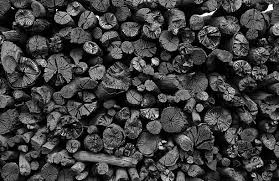The global wood
charcoal market remained static over the last three years
In 2016, the global wood charcoal market stood at 51.1M tonnes. From
2007 to 2013, the global wood charcoal market remained relatively
stable, despite being subject to a slight decline in 2009 and seeing
a minor acceleration over the period from 2012-2013; overall, it
increased from 46.9M tonnes in 2007 to 50.9 million tonnes in 2013.
Then, however, the growth lost its momentum, and the market leveled
off, with only minor fluctuations throughout 2016.
In wholesale prices, the global wood charcoal market reached $22.7B
in 2016. This figure reflects the total revenue of producers and
importers (excluding logistics costs, retail marketing costs, and
retailers’ margins, which will be included in the final consumer
price).
In 2016, Brazil (5,501K tonnes), Ethiopia (4,317K tonnes) and
Nigeria (4,250K tonnes) were the leading consuming markets. In
addition, these countries were also the leading producers of wood
charcoal. These three leading countries together accounted for 27%
of global consumption and 28% of global production.

The global wood charcoal market is set to see a period of mild
growth
Wood charcoal is one of the most accessible fuels for people with a
low income in many of the African and South-Eastern Asian countries.
For this reason, wood charcoal is expected to experience maximum
demand in these regions, compared with other energy sources, against
a rising population, low income levels and their slow rate of
growth. Therefore, the market will continue to experience measured
growth until 2025, with a CAGR of +1.0%, or 55.8M tonnes by the end
of the forecast period.
The majority of the world's wood charcoal production is
concentrated in Africa
Wood charcoal production indicated a measured growth over the last
few years. From 2007 to 2016, global wood charcoal production
expanded to 50.9M tonnes. In value terms, it reached $22.6B USD in
2016.
In physical terms, Africa was the leading charcoal producing region,
consisting of approx. 63% of global wood charcoal output in 2016.
Nigeria (9%), Ethiopia (8%), Democratic Republic of the Congo (5%),
Ghana (4%), Tanzania (4%) and Madagascar (3%) constituted the major
producing countries in the African region.
Outside Africa, in absolute terms, Brazil remains a key producer
country in global terms, with an 11% share. India (6%) ranked
fourth, with China (3%) and Thailand (3%) lagging somewhat behind.
While the production levels of wood charcoal decreased in Brazil,
production in the other leading wood charcoal producing countries
has been steadily growing.
Developing countries remain independent of imports
The low trade intensity is determined mainly by the fact that
charcoal use and consumption is practised mostly in the developing
nations, which also constitute the major producing countries. In
these countries, charcoal is of vital importance as a source of
primary energy for households, as well as being used for some
industrial applications. Therefore, the share of imports in terms of
global consumption remained below 5% from the beginning of the
period under review; its substantial growth is not projected in the
medium term.
Indonesia remained the major wood charcoal exporter
In 2016, the volume of global exports totaled 2.3M tonnes,
contracting slightly after a period of consistent growth from 2010
to 2015. Overall, exports grew with an annual average growth rate of
+3.2% per year over the period under review.
Indonesia (16%), Nigeria (9%), Poland (7%), Ukraine (7%), Myanmar
(5%), Cuba (5%) and Namibia (4%) were the main global suppliers of
wood charcoal, together comprising a combined share of 48% of global
exports. From 2007 to 2016, Cuba (+30.6% per year), Ukraine
(+12.4%), Poland (+10.8%), Nigeria (+8.8%) were the fastest growing
suppliers among the major exporters, while Indonesia, Namibia and
Myanmar experienced more modest paces of growth. Indonesia, Ukraine,
Cuba (+4 percentage points, each), Nigeria and Poland (+3 percentage
pints, each) slightly increased their positions in global export
structure, while the shares of the other countries remained
relatively stable over the last nine years.
Germany constitutes a major importer of wood charcoal, assuming
an 8% share of global imports.
The volume of global imports totaled 2.5M tonnes in 2016. The
imports trend pattern generally mirrored that of exports: these
trade flows globally complement each other.
In 2016, Germany (8%), China (6%), Japan (6%), Poland (6%), Korea
(5%), Saudi Arabia (5%), and the U.A.E. (5%) constituted the leading
destinations for wood charcoal imports; all these countries together
accounted for 59% of global imports. Amongst the major importing
countries Poland (+15.6% per year) and the U.A.E. (+12.9% per year)
gained the highest annual rates of growth from 2007 to 2016. While
the share of Poland (+4 percentage points), China (+2 percentage
points), Saudi Arabia (+2 percentage points) and the U.A.E. (+2
percentage points) increased slightly from 2007 to 2016, the share
of Japan (-2 percentage points) illustrated a slight contraction.
The shares of the other countries remained relatively stable
throughout the analyzed period.
Source: IndexBox